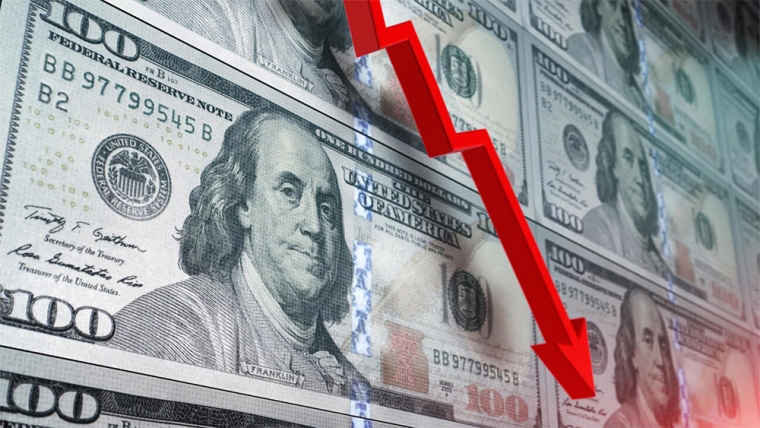
The market has cheered two much weaker than expected US economic releases, driving risk appetite higher. US equities show strong gains, US Treasury yields have fallen, led by the short end, and the USD fell notably after some prior strength.
According to the US JOLTS report, job openings plunged to a more than two-year low and were over 620k weaker than expected at 8.8m, the miss exacerbated by downward revisions to prior data. A decisive downward trend has been in play, with job openings now down six of the past seven months, sending the ratio of openings to unemployed down to 1.5 from a peak of 2.0, fast closing in on the 1.0 level that Fed Chair Powell wants to see. The quits rate showed a sharp decline to 2.3, the lowest since early 2021, adding to the sense of much easier labour market conditions, with less confidence in an ability to find another job in the current market.
In a separate report the Conference Board consumer confidence index also fell by more than expected, with roughly equal drops in the current conditions and expectations components. The gap between the jobs “plentiful” and jobs “hard-to-get” index fell to its lowest level since early 2021, corroborating the weaker JOLTS labour market data.
US Treasury yields were drifting higher heading into those data releases, but the market reaction was notable, with the 2-year rate diving from a pre-data high of 5.03% to the current 4.89% and the 10-year rate diving from 4.24% to 4.12%. At Jackson Hole, Fed Chair Powell highlighted how the Fed was data dependent, and the weaker data reduce the chance of another tightening and bring forward the case for easier monetary policy next year.
Lower US rates spilled over into other markets, with European rates lower, although more modest falls compared to the US. Germany’s 10-year rate is down 5bps on the day compared to a net 8bps fall in the US 10-year.
Equity markets have cheered the bad economic news, sending the S&P500 up 1.3%, having now recovered half of its loss through August over the past three sessions. All sectors are in positive territory. The Euro Stoxx 600 index closed up 1.0%.
The data reversed earlier strength in the USD, which now shows broadly based losses for the day. The DXY index is down 0.5% for the day, but down 0.8% from the pre-data level. Earlier in the NY session, the yen was under significant pressure, with USD/JPY on a tear towards 147.50, seeing the yen at a fresh low for the year. This was spilling over into other currencies, with the NZD back testing last week’s low below 0.5890 before recovering sharply to over 0.5960 post the data. The AUD has recovered from just over 0.64 to 0.6475. NZD/AUD is slightly stronger, trading back just over 0.92 after spending most of yesterday below the figure. USD/JPY is back below 146.
The NZD is stronger on the other key majors, with the strongest gains seen against CAD and GBP, both up around 0.7%, seeing NZD/GBP back over 0.47.
In other news, there has been more talk of incremental policy changes in China. Bloomberg reported that China’s largest banks are preparing to cut interest rates on existing mortgages and deposits, directed by the State. Meanwhile Chinese media report the Finance Minister vowing to strengthen policy support and speed up government spending as the economy comes under strain, ahead of an important Politburo meeting. The USD has been in the box seat with USD/CNH falling from just over 7.31 overnight to 7.2840.
Global forces supported lower domestic rates yesterday, with NZGB yields down 2-3bps across the curve and swap rates down 4-5bps. This saw the NZGB 10-year rate close back below the 5% mark at 4.99%. On the open, the pressure on yields will remain to the downside, with the Australian 10-year bond future down 5bps in yield terms since the NZ close.
In the day ahead, the Australian monthly CPI, weighted towards the goods sector, is expected to show a drop to 5.2% y/y by the consensus but with three of the four major trading banks picking a sub-5% outcome. If the data comes in below consensus, then this will convey a misleading inflation signal, with strong gains for the quarter expected when large increases in services sector prices are eventually included.
German CPI inflation data tonight and Euro area inflation later in the week come ahead of the ECB’s key September meeting. The US ADP private payrolls print should be ignored, given it has been a poor indicator of the more important non-farm payrolls figure due at the end of the week.ond-tier global releases on the calendar. RBA Deputy Governor Bullock, who hasn’t yet taken over the reins as the new Governor, will be talking about Climate Change.

We welcome your comments below. If you are not already registered, please register to comment.
Remember we welcome robust, respectful and insightful debate. We don't welcome abusive or defamatory comments and will de-register those repeatedly making such comments. Our current comment policy is here.